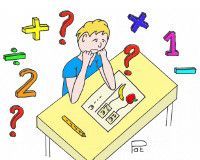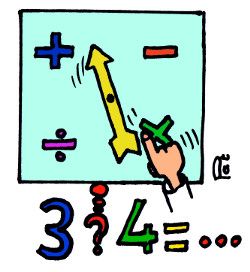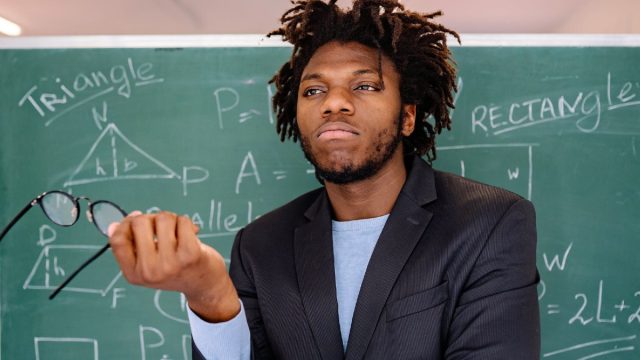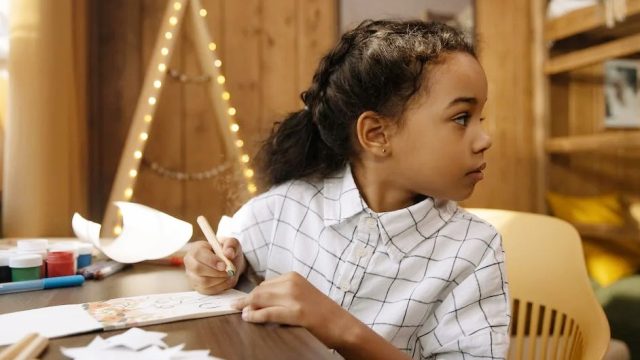A Key to Learning: Connecting

In addition to my Davis® Dyslexia Correction practice, I regularly teach supportive math lessons to students between sixth and 12th grade. And in every case, one of my first questions when approaching a new concept is: “What is it for? What are the examples in everyday life?”
Very regularly, if not always, the answer is a big vague look, the questioning eyebrow followed by a shrug of the shoulders.
However, in order to learn, we need to relate our new learning to something we already know, to our current reality of the outside world.
A very young child very quickly discovers that the cookies are in that cupboard . Then when Mum says we’re going to the bakery, maybe there will be a croissant. And still a multitude of things in the world.
And a day comes when a word is presented to the child. “Mum”, “Dad”, “cat”, “the”, “drinks”, “some”, “milk” … If the child manages to link these few groups of letters to what he already knows, like the fur ball purring on the couch, or the act of drinking, everything is fine. But if the connection doesn’t … We call it dyslexia.
Mathematics…

Whenever I ask my students ” give me an example of addition “, I get something like “3 + 2 “.
I will shock some people, but “3 + 2” is not an example of addition!
On the other hand, ” I have three friends at home and two more are coming ” is an example of an addition. It is concrete, real. The operation ” 3 + 2 ” is only a representation of a certain reality, a way of writing mathematically what happens in the real world. Without this link, it is impossible to understand or learn the notion of addition.
And every week, during my math tutoring classes, my students more or less randomly choose the operation that solves the math problem. It does not work !!!
…reading…
One of my learners confused the “flan ” (the pastry) and the “flank ” (the side of a thing). So of course, what she imagined for ” a staircase on the flank of a hill” (in French, un escalier sur le flanc d’une coline) was a curious artistic composition of staircase steps and a rickety dessert!
Another of my students linked the word ” weekend ” to ” days when I am not working, ie Wednesday, Saturday, Sunday “. And obviously, the calculations asking for the number of days in a weekend were wrong …
And that’s not to mention an exercise that I like to offer my students and which begins with “In a household, we spend … “. Guess what most children visualize: a person sweeping. Impossible to continue without restoring the reality of the word.
…and the rest
A saying goes “a little drawing is better than a long speech”, so what could be simpler for a classroom activity than finding a photo of a pyramid and a sphynx while studying Egypt, of a fortress while learning about the Middle Ages, or planting and sprouting lentils.
This is of course what is done in class, but how far are we sure that the child will really master what he sees and does? How can you be sure that the child observes what needs to be observed, makes the link between all the elements?
Learning and mastering any concept requires a certain technique, a know-how. We must learn how to learn ..
More than a desire, an imperative need
A word thinker may very well be content with learning by heart a rule, a word, a definition. When he needs to use this definition, he will only have to recite this definition audibly to himself.
But this is not possible for the image thinker. He must imperatively master what the rule means, he cannot content himself with reciting it, he must make the link with reality.
If the pictorial thinker tries to memorize a definition for which he has no representation in the real world, this is likely to lead to intense emotions, anger, rejection, a feeling of helplessness. making any learning impossible …
Davis® programs
During the dyslexia correction programs, one of the important steps is precisely to create or re-establish the link with reality, with experience. And the methods used to achieve this assure us that the conditions for learning are optimal.
This article has been translated from French by Abigail Marshall, with the help of Google translate. For the original French version, see https://www.infodyslexie.org/articles-dyslexie/cle-apprentissage-relier
The drawings on this page are original artwork from the website www.infodyslexie.org — they are used with permission from the site owner.









